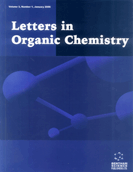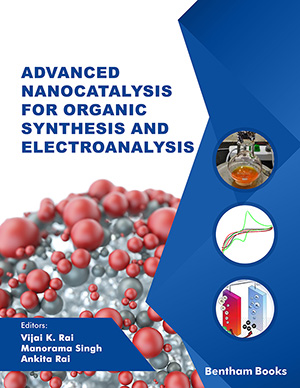Abstract
Quinolones are among the class of antibiotics that are used most frequently worldwide and are used for treating a variety of bacterial diseases in humans. Recent research has shown that new, improved analogues of quinolones are being used as anticancer, antifungal, antiviral and other antimicrobial agents. In an earlier review (Part 1), we discussed the synthesis and antibacterial activity of quinolones in detail. This review focuses on the detailed study of newly synthesized quinolone compounds and their biological activity in different dimensions.
Keywords: Quinolones, antibacterial, anticancer, antiviral, antifungal, biological activity.
[http://dx.doi.org/10.1007/5584_2019_428]
[http://dx.doi.org/10.1093/jac/dkg208] [PMID: 12702699]
[http://dx.doi.org/10.1093/jac/dkg212] [PMID: 12702698]
[http://dx.doi.org/10.1021/cr030101q] [PMID: 15700957]
[http://dx.doi.org/10.1039/C9MD00120D] [PMID: 31803393]
[PMID: 10821154]
[http://dx.doi.org/10.3390/antibiotics6040026] [PMID: 29112154]
[http://dx.doi.org/10.2174/1385272824999200427082108]
[http://dx.doi.org/10.2165/00003495-199447060-00003] [PMID: 7521829]
[http://dx.doi.org/10.1128/AAC.01617-06] [PMID: 17724149]
[http://dx.doi.org/10.1002/jhet.3153]
[http://dx.doi.org/10.1371/journal.pone.0010186] [PMID: 20419121]
[http://dx.doi.org/10.2174/1381612822666160715115025] [PMID: 27426131]
[http://dx.doi.org/10.1016/j.biopha.2018.12.119] [PMID: 30841473]
[http://dx.doi.org/10.2174/1568005043340920] [PMID: 15180459]
[http://dx.doi.org/10.1002/ardp.201800382] [PMID: 31021468]
[http://dx.doi.org/10.1016/j.ejmech.2017.09.050] [PMID: 29031077]
[http://dx.doi.org/10.2174/092986707780831168] [PMID: 17584056]
[http://dx.doi.org/10.1517/17460441.2010.508069] [PMID: 22823262]
[http://dx.doi.org/10.2174/157017811799304322]
[http://dx.doi.org/10.3906/kim-1109-9]
[http://dx.doi.org/10.1016/j.ejmech.2009.06.031] [PMID: 19647905]
[http://dx.doi.org/10.1016/j.ejmech.2018.03.026] [PMID: 29547830]
[http://dx.doi.org/10.1016/j.bbamem.2012.05.027] [PMID: 22664062]
[PMID: 15377058]
[PMID: 11595719]
[http://dx.doi.org/10.1016/j.ejmech.2019.111810] [PMID: 31678743]
[http://dx.doi.org/10.1002/ardp.201800141] [PMID: 30048015]
[http://dx.doi.org/10.22037/IJPR.2010.628]
[http://dx.doi.org/10.1128/AAC.2.1.23] [PMID: 4670656]
[http://dx.doi.org/10.1128/AAC.6.2.207] [PMID: 15828193]
[http://dx.doi.org/10.1016/j.bmcl.2015.11.063] [PMID: 26646219]
[http://dx.doi.org/10.3390/pharmaceutics14081749] [PMID: 36015376]
[http://dx.doi.org/10.3390/antibiotics3030244] [PMID: 27025747]
[http://dx.doi.org/10.1016/bs.aihch.2016.01.001]
[http://dx.doi.org/10.1016/j.arabjc.2012.07.017]
[http://dx.doi.org/10.1007/s00044-015-1495-5]
[http://dx.doi.org/10.1080/14756366.2016.1190711]
[http://dx.doi.org/10.1002/cmdc.201700739] [PMID: 29512892]
[http://dx.doi.org/10.1016/j.ejmech.2016.01.052] [PMID: 26871658]
[http://dx.doi.org/10.1016/j.ejmech.2019.01.062] [PMID: 30711832]
[http://dx.doi.org/10.1016/j.bmcl.2015.07.077] [PMID: 26253630]
[http://dx.doi.org/10.1016/j.bmcl.2015.06.041] [PMID: 26149183]
[http://dx.doi.org/10.1016/j.ejmech.2018.01.039] [PMID: 29360043]
[http://dx.doi.org/10.1517/13543784.11.2.233] [PMID: 11829714]
[http://dx.doi.org/10.1128/AAC.00695-11]
[http://dx.doi.org/10.1021/acs.jmedchem.6b01718] [PMID: 28304162]
[http://dx.doi.org/10.1016/j.ejmech.2020.112513] [PMID: 32623216]
[http://dx.doi.org/10.1021/jo00205a004]
[http://dx.doi.org/10.3390/molecules17089790] [PMID: 22895025]
[http://dx.doi.org/10.1002/ardp.201900045] [PMID: 31274223]
[http://dx.doi.org/10.1007/s00044-020-02546-z]
[http://dx.doi.org/10.1016/j.bmcl.2019.126881]
[http://dx.doi.org/10.1002/jhet.3515]
[http://dx.doi.org/10.1016/j.jsps.2012.03.002] [PMID: 23960814]
[http://dx.doi.org/10.1002/jhet.3260]
[PMID: 15427365]
[http://dx.doi.org/10.1002/zfch.19850250804]
[http://dx.doi.org/10.1021/jm00097a001] [PMID: 1404226]
[http://dx.doi.org/10.1016/j.tet.2016.01.051]
[http://dx.doi.org/10.1016/S0040-4020(03)00054-1]
[http://dx.doi.org/10.1002/cber.19811141102]
[http://dx.doi.org/10.1021/acsinfecdis.7b00130] [PMID: 29260545]
[http://dx.doi.org/10.1093/jac/dki256] [PMID: 16024592]
[http://dx.doi.org/10.1002/anie.201510610] [PMID: 27862776]
[http://dx.doi.org/10.1093/jac/dks127] [PMID: 22547662]
[http://dx.doi.org/10.1158/1535-7163.MCT-07-0475] [PMID: 18483319]
[http://dx.doi.org/10.1021/cr00026a006]
[http://dx.doi.org/10.2174/187152009787047743] [PMID: 19149479]
[http://dx.doi.org/10.1021/acsomega.9b00834] [PMID: 31867477]
[http://dx.doi.org/10.1021/jm301882a] [PMID: 23514599]
[http://dx.doi.org/10.1016/j.ejmech.2019.01.017] [PMID: 30660827]
[http://dx.doi.org/10.1016/j.ejmech.2013.08.040] [PMID: 24090914]
[http://dx.doi.org/10.1186/s12885-015-1560-y] [PMID: 26260159]
[http://dx.doi.org/10.1016/j.tetlet.2020.151873]
[http://dx.doi.org/10.2174/092986707781058805] [PMID: 17627520]
[http://dx.doi.org/10.1016/j.ejmech.2015.02.049] [PMID: 25768707]
[http://dx.doi.org/10.1016/j.ejmech.2014.04.052] [PMID: 24780595]
[http://dx.doi.org/10.1016/j.bmc.2015.10.042] [PMID: 26578325]
[http://dx.doi.org/10.1016/j.bmcl.2013.10.035] [PMID: 24215890]
[http://dx.doi.org/10.1016/j.rppnen.2017.10.009]
[http://dx.doi.org/10.1016/j.ejmech.2018.10.031] [PMID: 30384044]
[http://dx.doi.org/10.1016/j.bmcl.2021.127928] [PMID: 33705899]
[http://dx.doi.org/10.3390/ijms23147688] [PMID: 35887038]
[http://dx.doi.org/10.1016/j.ejmech.2019.06.046] [PMID: 31254919]
[http://dx.doi.org/10.1021/acs.jmedchem.5b01678] [PMID: 27115717]
[http://dx.doi.org/10.1002/chem.201302085] [PMID: 23893376]
[http://dx.doi.org/10.1016/j.dyepig.2018.09.005]
[http://dx.doi.org/10.1016/j.ejmech.2019.06.071] [PMID: 31279292]
[http://dx.doi.org/10.1007/s00044-013-0581-9]
[http://dx.doi.org/10.1093/jac/dkg380] [PMID: 12917240]
[http://dx.doi.org/10.1111/j.1469-0691.1998.tb00054.x] [PMID: 11864341]
[http://dx.doi.org/10.2165/00003495-200363240-00008] [PMID: 14664657]
[http://dx.doi.org/10.1016/j.bmcl.2015.07.044] [PMID: 26238324]
[http://dx.doi.org/10.1128/AAC.39.10.2262] [PMID: 8619580]
[http://dx.doi.org/10.1155/2015/759348] [PMID: 25866808]
[http://dx.doi.org/10.1016/j.bmcl.2016.01.012] [PMID: 26826023]
[http://dx.doi.org/10.1016/S0065-2725(08)60040-9]
[http://dx.doi.org/10.1016/S0022-1139(97)00006-7]
[http://dx.doi.org/10.1002/jhet.2391]
[http://dx.doi.org/10.1086/321846] [PMID: 11524717]
[http://dx.doi.org/10.1002/jhet.3189]
[http://dx.doi.org/10.1002/jhet.3279]
[http://dx.doi.org/10.1002/jhet.2980]
[http://dx.doi.org/10.1111/cbdd.12125] [PMID: 23452185]
[http://dx.doi.org/10.3109/14756360903524304] [PMID: 20583859]
[http://dx.doi.org/10.1016/j.bmcl.2007.05.093] [PMID: 17566733]
[http://dx.doi.org/10.1002/jhet.236]
[http://dx.doi.org/10.1134/S1070363216120525]
[http://dx.doi.org/10.1002/jhet.2907]
[http://dx.doi.org/10.1128/9781555815929]
[http://dx.doi.org/10.1016/j.sjbs.2014.08.002] [PMID: 25561890]
[http://dx.doi.org/10.1128/AAC.01231-08] [PMID: 19164144]
[http://dx.doi.org/10.1021/acs.jmedchem.8b01923] [PMID: 31009558]
[http://dx.doi.org/10.1016/bs.aambs.2018.12.001] [PMID: 30798803]
[http://dx.doi.org/10.1016/j.coph.2013.07.001] [PMID: 23876838]
[http://dx.doi.org/10.1021/acs.jmedchem.9b01388] [PMID: 31580658]
[http://dx.doi.org/10.1093/jac/dkx543] [PMID: 29425340]
[http://dx.doi.org/10.1016/j.bmcl.2020.127428] [PMID: 32799032]
[http://dx.doi.org/10.1016/j.ejmech.2013.06.056]
[http://dx.doi.org/10.13005/ojc/290216]
[http://dx.doi.org/10.1007/s12551-021-00795-9]
[http://dx.doi.org/10.13005/ojc/380232]
[http://dx.doi.org/10.1016/j.rechem.2022.100397]
[http://dx.doi.org/10.1016/j.bmcl.2023.129214] [PMID: 36870624]
[http://dx.doi.org/10.1038/s41598-021-89605-6]



























